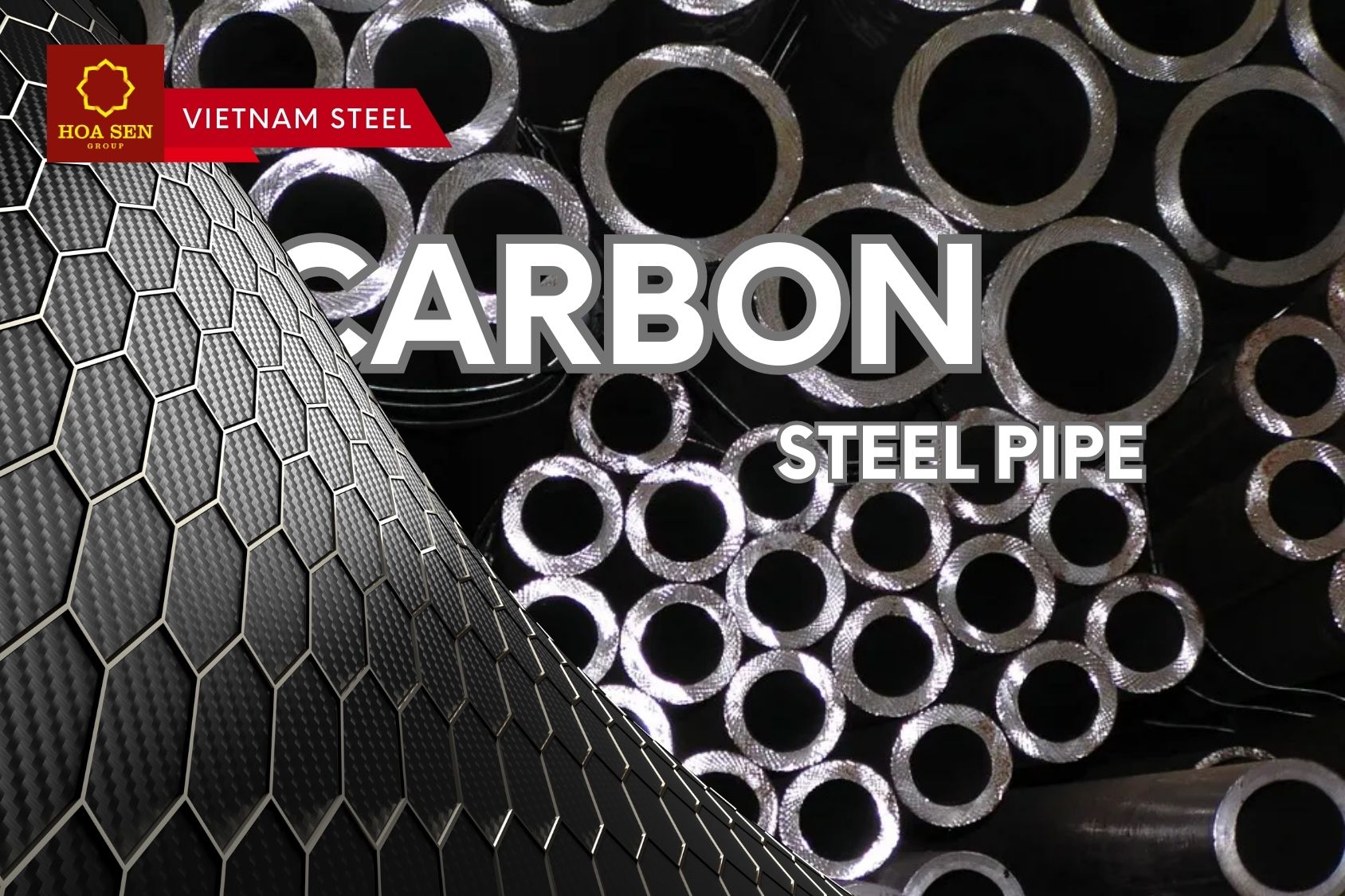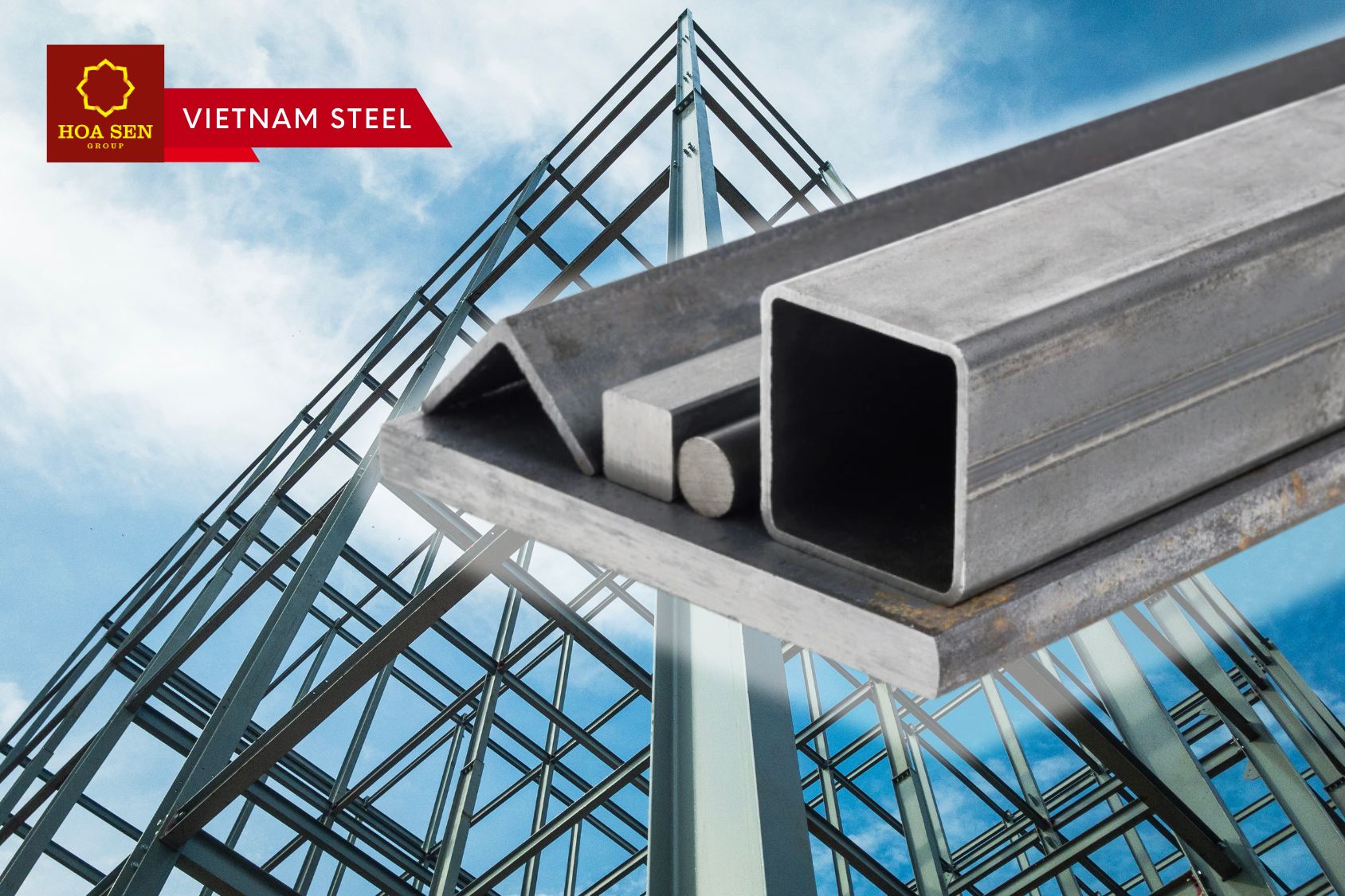Carbon steel pipes present an excellent choice for numerous residential and industrial endeavors due to their robustness, enduring nature, and remarkable adaptability. However, an in-depth understanding of carbon steel pipes and their applications is necessary. Within this article, we will dissect the various applications of carbon steel pipes, empowering you to assess their appropriateness for your specific project.
What is Carbon Steel Pipe?
A carbon steel pipe constitutes a form of metallic conduit crafted from an amalgam of iron and carbon. It embodies formidable attributes, displaying durability alongside resistance to both corrosion and oxidation. In comparison to alternative piping materials like copper or aluminum, carbon steel pipes exhibit elevated levels of tensile strength. This characteristic renders them exceptionally well-suited for endeavors necessitating robustness as a paramount factor.
Read More: What is Carbon Steel? Uses of Carbon Steel
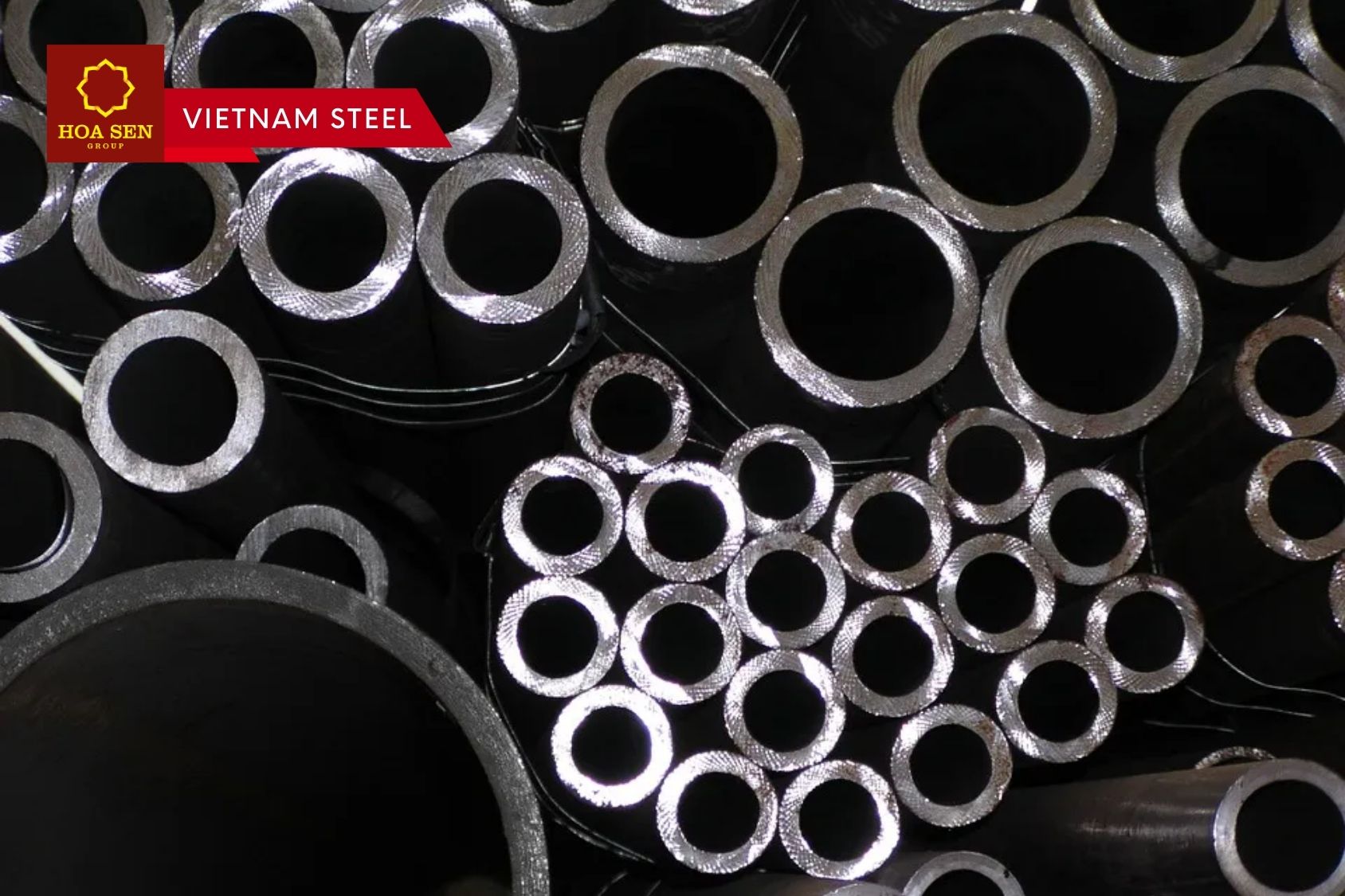
Carbon Steel Pipes Properties
Corrosion Rate
The pace of corrosion observed in carbon steel pipes is contingent upon various variables. These encompass the installation surroundings (indoor or outdoor), the composition of the water supply or contaminants, and the adequacy of ventilation to maintain minimal oxygen levels. In a broad context, when all other conditions remain constant, indoor installations tend to exhibit lower corrosion rates in comparison to outdoor settings.
Density
The density of carbon steel pipes fluctuates based on their grade and constitution. Elevated grades typically display greater densities due to the inclusion of additional alloying components like manganese and chromium. On average, the density of carbon steel pipes spans from 7.85 g/cm³ to 8.05 g/cm³.
Standard Length
Generally, carbon steel pipes are available in standard lengths of 6 meters (19 feet) for seamless pipes and 12 meters (39 feet) for welded pipes. Nonetheless, certain suppliers might provide tailored lengths to align with specific customer needs.
Wall Thickness
Carbon steel pipes exhibit wall thicknesses ranging between 0.13 inches and 4 inches, contingent upon the grade and stipulations of their intended use. For instance, robust structures such as bridges typically demand thicker walls to withstand higher levels of pressure. Conversely, slender walls find favor in residential applications, as they can be effortlessly shaped according to need without incurring substantial effort or cost.
Carbon Steel Pipes Uses
Carbon steel pipes find versatile application across a multitude of domains. Among the prevalent utilizations are water supply lines, heating setups, fuel conduits, oil pipelines, natural gas networks, and beyond. Their significance extends to construction undertakings, contributing to ducts, drainage frameworks, foundational support columns, and assorted structural constituents. Furthermore, they play a pivotal role in manufacturing operations where the imperative lies in temperature regulation or confining pressure.
Carbon steel pipes see frequent application in the conveyance of oil and natural gas. Beyond this, they serve as scaffolding pipes in the construction sector. In addition, these pipes play a role in furniture manufacturing, find limited usage in the food industry, and serve diverse functions in the medical sector.
Their utility spans a range of areas, including:
- Establishing building foundations.
- Conveying natural gases or oil.
- Facilitating boiler and condenser tubes.
- Transporting wastewater.
- Enabling chemical processing.
- Catering to high-pressure requirements.
- Conveying sewage.
- Supporting bollard construction.
Read More: What is Galvanized Steel? The Galvanized Steel Manufacturing Process
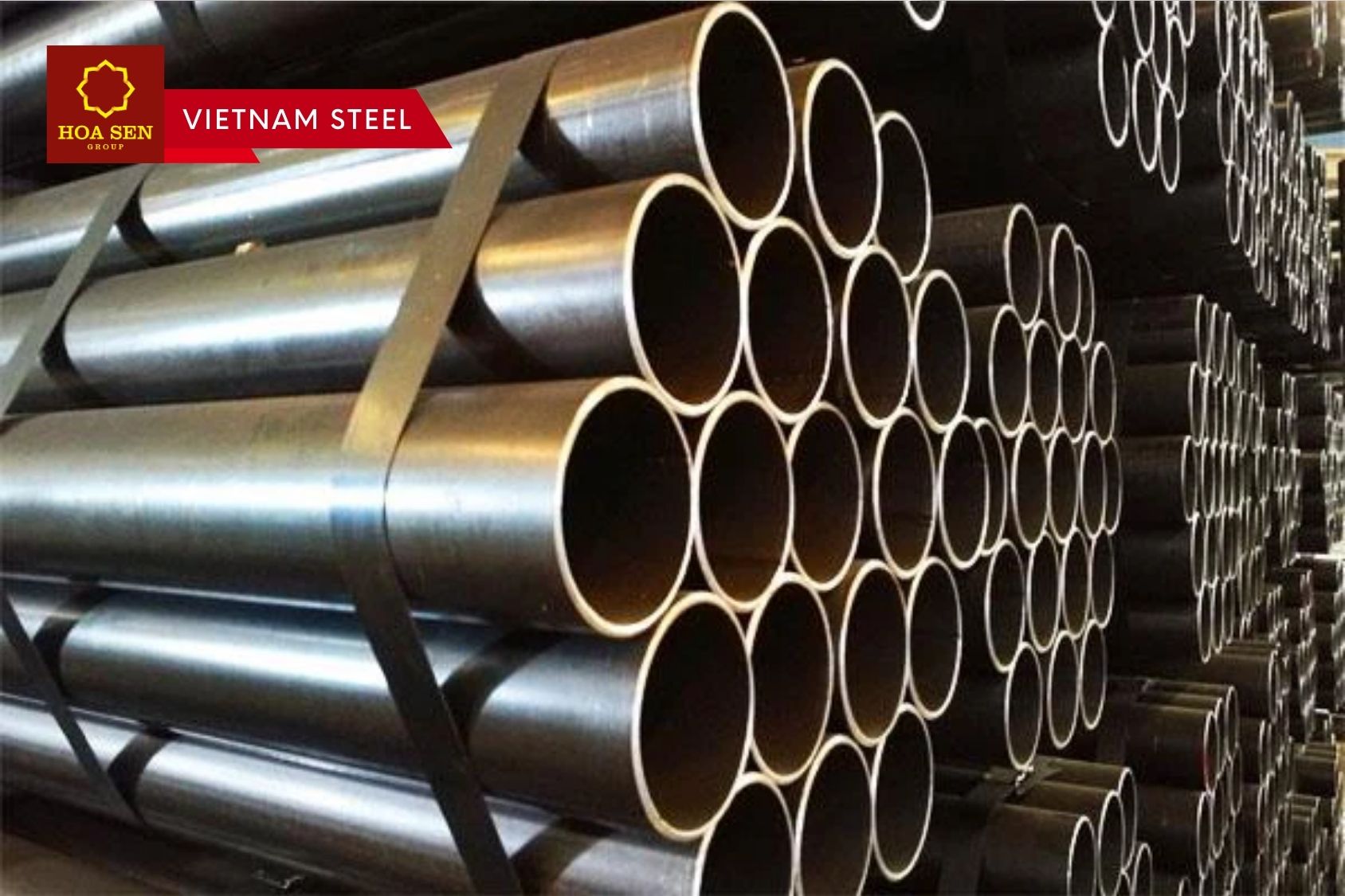
Types of Carbon Steel Pipes Grades
A106 Grade B
A106 Grade B represents a variant of carbon steel pipe frequently employed in power plants, oil and gas refineries, petrochemical plants, and boiler installations. The key distinction between A106 Grade B and other carbon steel pipe grades lies in the manganese content within the steel composition. Manganese, a chemical element, plays a pivotal role in enhancing the robustness and durability of the steel.
A333 Grade 6
A333 Grade 6 denotes a variation of carbon steel pipe extensively employed in scenarios involving low temperatures, notably in the conveyance of oil and gas. The primary divergence distinguishing A333 Grade 6 from alternative carbon steel pipe grades pertains to the chromium content within the steel composition. Chromium, a chemical element, contributes significantly to enhancing the steel's ability to resist corrosion.
API 5L X42
API 5L X42 represents a variant of carbon steel pipe frequently deployed in the transmission of oil and gas. The pivotal distinction setting apart API 5L X42 from alternative carbon steel pipe grades resides in the carbon content within the steel composition. Carbon, a key element, plays a vital role in enhancing the steel's strength and hardness.
ASTM A53
ASTM A53 designates a variation of carbon steel pipe frequently employed in structural contexts like bridges and buildings. The fundamental contrast distinguishing ASTM A53 from alternative carbon steel pipe grades is the manganese content embedded within the steel composition. Manganese contributes significantly to enhancing the weldability of the steel.
ASTM A106
ASTM A106 designates a variant of carbon steel pipe extensively utilized in high-temperature scenarios like power plants and oil and gas refineries. The principal differentiation setting ASTM A106 apart from alternative carbon steel pipe grades lies in the silicon content infused within the steel composition. Silicon substantially contributes to enhancing the steel's strength and hardness.
ASTM A335
ASTM A335 denotes a category of carbon steel pipe widely applied in elevated-temperature settings, including power plants, oil refineries, and petrochemical installations. The primary contrast distinguishing ASTM A335 from alternative carbon steel pipe grades lies in the molybdenum content integrated into the steel composition. Molybdenum significantly contributes to enhancing the steel's ability to resist corrosion.
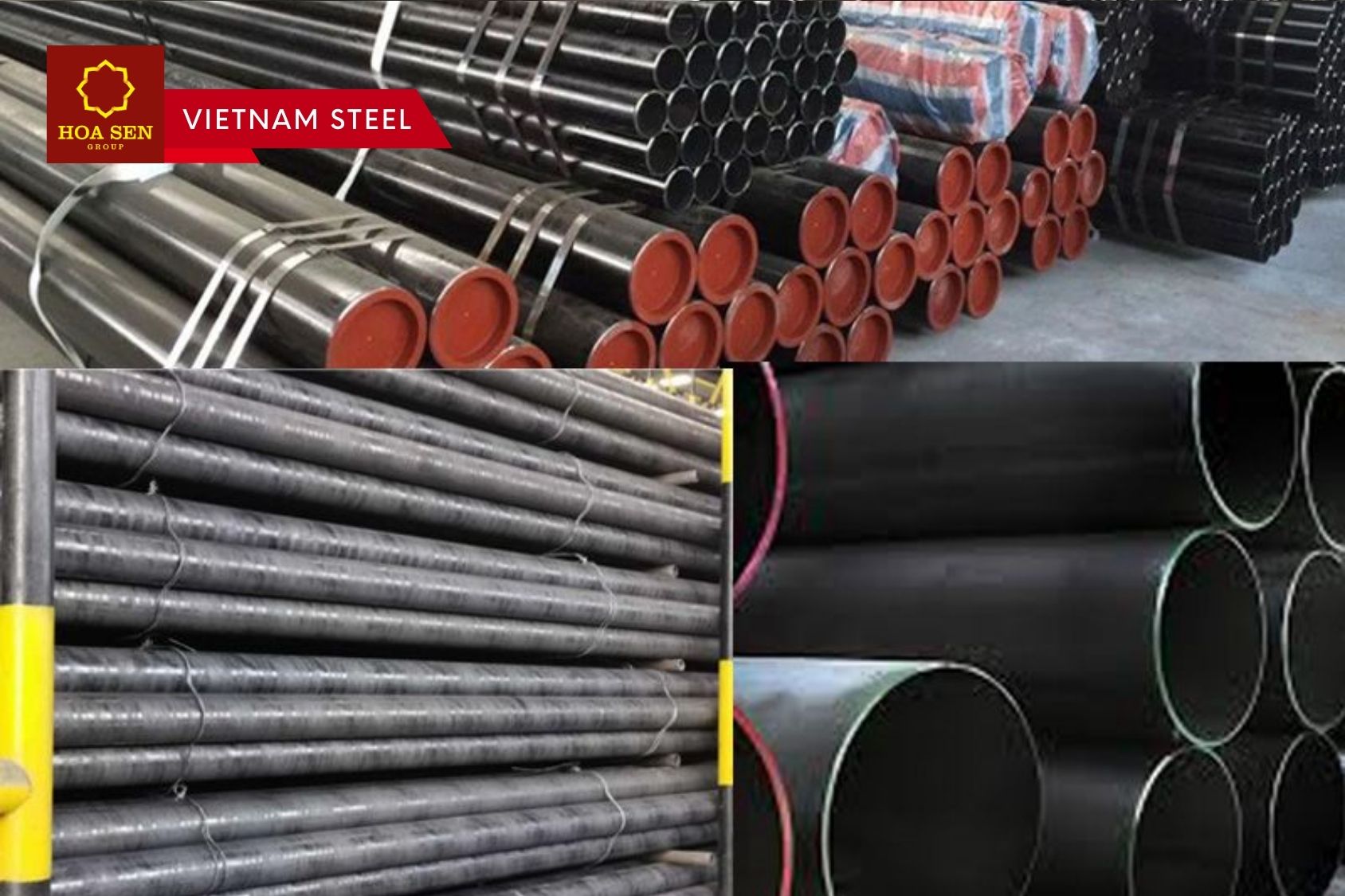
Benefits of Using Carbon Steel Pipes
Carbon steel pipes present a host of advantages compared to alternative metal piping materials. They stand as both dependable and economical, rendering them appealing for a variety of endeavors. Furthermore, their durability mitigates the necessity for extensive upkeep, as they withstand wear and tear over time. Notably, they obviate the requirement for specialized coatings or sealants to safeguard against external elements such as rain or snow, thus streamlining both installation and maintenance efforts while reducing costs. Lastly, their notable recyclability means they can find utility in subsequent projects, contributing to sustainable practices.
Vietnam Steel by Hoa Sen Group
